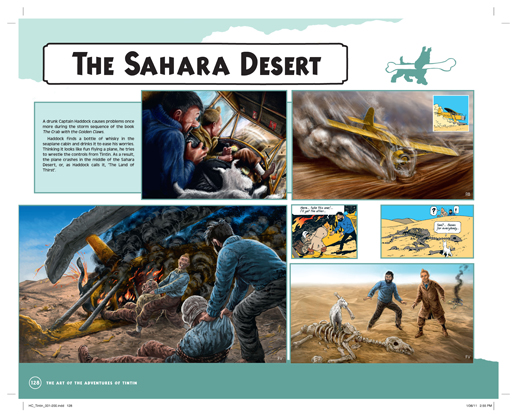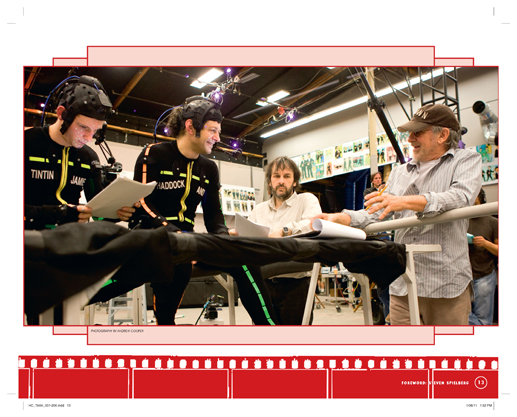 The rest of the world is perfectly free to walk (or run) to the cinema and watch The Adventures of Tintin directed by the legendary Steven Spielberg. But for once, the tables are turned on movie lovers in the U.S. and we must wait until December to see the motion capture film of the beloved comic strip character produced by Peter Jackson.
The rest of the world is perfectly free to walk (or run) to the cinema and watch The Adventures of Tintin directed by the legendary Steven Spielberg. But for once, the tables are turned on movie lovers in the U.S. and we must wait until December to see the motion capture film of the beloved comic strip character produced by Peter Jackson.
However, those who are anticipating Belgian writer and cartoonist Hergé’s collection of grand adventure stories put on screen can content themselves with The Art of The Adventures of Tintin book from special effects studio Weta and HarperCollins.
Weta is best known for its efforts on the Lord of the Rings films but it has scores of other notable special effects achievements to its name — like James Cameron’s Avatar — and it looks as though it may have worked magic again, this time using complete 3D motion capture. One of Weta’s own, Tintin lead conceptual designer Chris Guise, authored the book, but while he wrote text for it officially, it feels more art directed than written.
That isn’t a criticism at all. Many “Art of” books go much too heavy on the text and this book avoids that trap and lets the images tell much of the story of how the film transformed the source material into animated, fleshed out, 3D characters in an animated yet realistic feeling world.
Credit must be given to Guise for allowing much of the rest of his team to add their voices. He liberally quotes contributors to tell the story of the process, usually in small snippets that refer the reader right back to the art.
In fact, the forwards from Spielberg and Jackson along with introductions from Joe Letteri of Weta Digital and Richard Taylor of Weta Workshop are the longest bits of reading in the whole book.
Also breaking from a well-traveled path, Guise doesn’t follow the story of the film but the story of the art of the film which gives the whole affair a more honest and less of a marketing tie-in feel. It lends the book more long-term value than those “just more of something good I saw at the cinema” art books. It might actually be inspiring and useful to artists; Guise admits in the text that doing so is his hope.
The best parts of the volume are pages that show Hergé’s work in all their simplistic beauty side-by-side with art from Weta transforming those same moments into something approaching the look of the film. It demonstrates the fidelity to the original source material without slavish reproduction.
Also on display is the motion capture process that demonstrates how Jamie Bell’s performance playing the titular character is transferred into the digital realm along with the guru of the process, Andy Serkis (Gollum) as Captain Haddock. Recently stealing the Planet of the Apes reboot with his almost dialog-free performance as lead chimp Caesar, Serkis and Haddock look humorous enough and flamboyant enough to do it again here.
It is disappointing that Simon Pegg and Nick Frost weren’t in a photo mo-capping Thomson and Thompson. The cartoon and real life pairs are funny stuff and I kept turning pages to see if I missed it somehow. On the other hand, a personal favorite that did make the cut of what must have been a preponderance of material was a panel of Weta boss Taylor miraculously included in a Tintin story as a background character drawn decades ago. The likeness is unmistakable and a grand coincidence that Weta fans will relish. Update: It is definitely worth noting that ordering the book directly from Weta delivers an exclusive in the form of three “parchment scrolls” and a map in a likeness of Tintin’s wallet.
The only other negative about this fine book is that somehow the slick, full color, beautiful pages and hardcover end up feeling too flexible when held. It seems to bend more than a hardback book should. That is a minor quibble and this book deserves a hearty recommendation and will deliver gobs of interesting study for fans of Tintin, Weta movies. The unique approach, fantastic images and concise quotes make it a star among “art of” cinema books.





